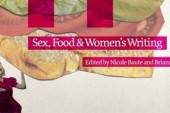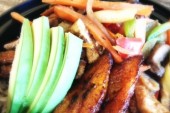
Everyone knows that taste is highly subjective. But tomato and basil, cucumber and mint, lamb and rosemary: these are among hundreds of timeless food pairings that we all seem to be able to agree upon. Over the course of centuries of trial and error, chefs from diverse regions and cultural backgrounds have arrived at these classic matches. There was no need for science and molecular identification. They just tasted good together, even if the underlying principles of the synergy weren’t fully understood.
But there have been recent efforts to deconstruct the logic of perfect pairings: it’s called flavour networking. It’s not a new social media fad; flavour networking is a legitimate branch of food science research, the purpose of which is to map out the underlying principles of combining ingredients. In a reportpublished last December, researchers sought to examine the general patterns that determine typical combinations of ingredients – the flavour alliances that transcend personal preference and show up often, everywhere.
The main question was whether or not ingredients that share the same flavour compounds, such as mint and cucumber that both share the aromatic compound menthol, appear more frequently together in recipes from around the world than ingredients that don’t share flavours. It’s the so-called food pairing hypothesis: foods that share key flavour components go well together.
The hypothesis is credited to chef Heston Blumenthal of the Fat Duck. Blumenthal was looking for new flavour combinations when he hit upon and unlikely pairing: caviar and white chocolate. Intrigued by his own empirical results, Blumenthal started investigating why this match worked so well. It turns out that caviar and white chocolate are brothers from another mother, sharing many key flavours, 73 to be exact. Thus the idea emerged that ingredients, however outlandishly coupled, should work well together if they share major flavour compounds.
The flavour network researchers examined some 56, 438 recipes from around the world, drawing links between ingredients sharing a significant number of flavours (the network) and measuring their occurrence together. The (contested) results appear to confirm that the food pairing hypothesis holds true, but not everywhere. North American and Western European recipes, for example, are dominated by molecularly matched ingredients, while Asian cuisine seems to be dominated by ingredients that don’t share flavours.
Whatever the case, food pairing theory has opened new doors of culinary experimentation, and with it, new avenues for exploring food and wine compatibility using the same theory. For example, I discovered that lamb meat is rich in terpenes, the compounds that contribute to its unique flavour. These same terpenes are found in rosemary and thyme (hence their suitability with lamb), but also in riesling. Lamb and riesling? Why not. I’ve tried it, and it works.
While it’s true that simply because wine and foods share identical flavours doesn’t guarantee that they’ll match well in practice — basic tastes (salty, bitter, umami, sweet and sour) need to be taken into account, as well as texture – it’s nonetheless a great starting point. And what’s more, the theory helps break us out of the same-old same-old mold. Last night I tried a robust red blend from Paso Robles, California, with grilled shrimp over coconut rice and sugar snap peas. That’s not a pairing you’ll likely find in any sommelier textbook. But you know what? It was bloody good. And knowing that warm climate reds develop flavours in the orchard and tropical fruit spectrum, and that barrel ageing contributes a coconut flavour of its own, it starts to make sense. Had I been thinking theoretically about a match for the dish, I would have considered maybe a voluptuous viognier, which is, like my red from Paso, full of tropical fruit, high alcohol and soft acid. Maybe we should do more tasting blindfolded so were not lead astray by our eyes.
And that brings me to my last point: the challenge in breaking with what we have been hard wired to believe — such as that keeping chocolate as far away from caviar as possible is a good idea – is that there’s a problem of perception because taste is so subjective. The overall palatability of any dish or wine, or food and wine pairing, involves much more than just the molecules of aroma and taste floating in the air or swimming around your mouth. We carry a lot of cultural-historical baggage with us. We’ve a biologically programmed aversion to the unfamiliar. If the though of chocolate and fish eggs, or fat new world red with delicate sweet shrimp is already a turn-off, then you’ve already set yourself up to dislike the combo.
So all you need do is free yourself from the past and open up your mind to relish new experiences. That, of course, is easier said than done.
_____
Read more:
Websites:
Books:
François Chartier, Taste Buds and Molecules
http://www.flavourthesaurus.com/
John Szabo is a master sommelier and wine writer for Toronto Standard. Follow his tweets here: @johnszabo.
For more, follow us on Twitter @TorontoStandard and subscribe to our newsletter.














